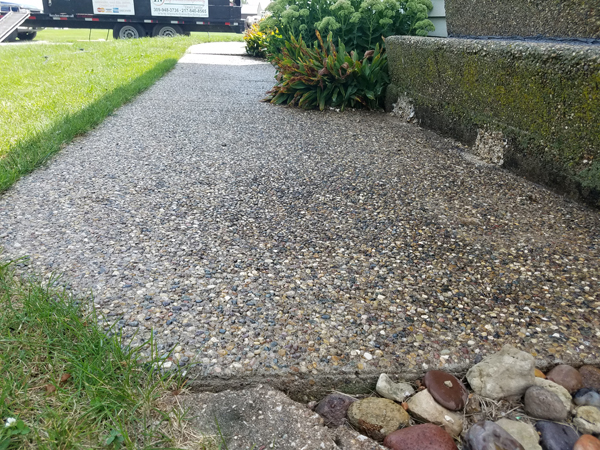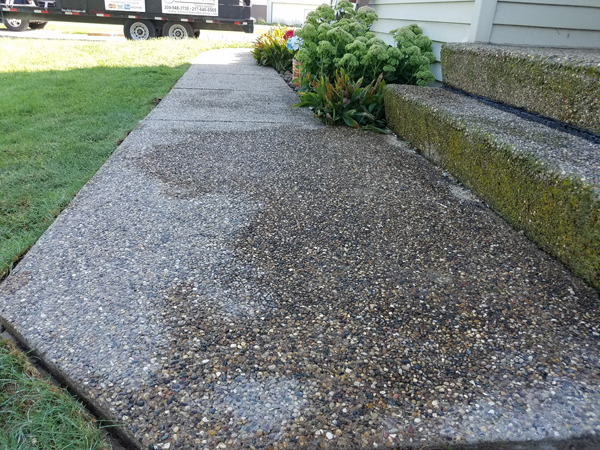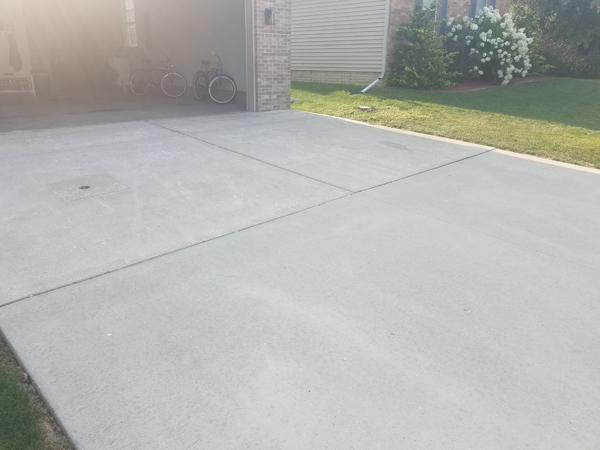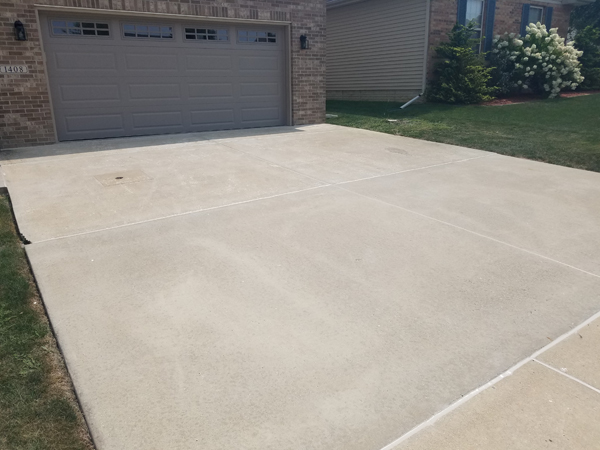
JACK IT UP!
Mudjacking
What is Mudjacking?
Mudjacking or Slabjacking is a process that raises sunken concrete back to its original level. This process will restore sunken or uneven concrete slabs to get them back to their original alignment with surrounding concrete slabs as close as possible
Mudjacking or slabjacking process generally starts with drilling small diameter access holes in the concrete, strategically located to maximize lift. Mixture is pumped underneath the concrete to raise it back to its original level. The holes are then patched with a high grade grout and your area is ready to use.
Advantages of Mudjacking over Replacing
The cost of mudjacking averages a fraction of the cost of replacing concrete. Mudjacking is faster, cleaner, and more cost effective. The cost varies by size and how much the concrete has settled. After your concrete is raised, you can drive on and use in as little as 24 hours. No wasted time or inconvenience!
Before

After

Crack Joint Sealing/Caulking
Why I should seal my concrete joints?
There are many reasons for sealing joints and open cracks in your concrete slabs. Concrete joint sealants will prolong the life of your concrete and minimize repairs. Same reason you clean and wax your vehicles... PREVENTIVE MAINTENANCE.
Unsealed joints invite moisture migrating through joints to the sub base causing erosion. This causes the ground to settle beneath the slabs and over time can heave and sink or even crack. In the winter water under your slabs will freeze and cause frost heave (Less water, less heaving). Sealing expansion joints at garage and house keeps salt from running down along the foundation as salt eats away the foundation. Big plus, it also sheds water away from your foundation for a drier basement.
Caulking will also prevent debris and weeds from gathering in joints during the expansion and contraction of the concrete caused by weather cycles. Small debris, such as rocks and pebble,s get into the joints impacting adjacent slab sections. Slab distress can result into rocking slabs and even vertical displacement at the joints.
What should I seal?
You should seal any open expansion joint, control joint or random crack that is wide enough to take on water.
Expansion Joints
Expansion Joints to keep concrete from buckling under the pressure of expansion. Once in a while you will hear about
highways
heaving up due to the expansion of concrete in extreme heat. Common areas of expansion are where concrete meet
sections of other areas. Such areas include next to foundations, garages, sidewalks, curb or driveway addition
(Old
concrete to new).
Control Joints
Control Joints are not to be confused with expansion joints. They serve two different purposes. Control joints are
grooved
joints tooled in while finishing the concrete. More common in the present they are saw cut in green concrete
usually within 24 hours of the concrete being poured and finished. As the name implies the purpose of the
control
joint is to control where the concrete slab cracks. AND IT WILL CRACK!
Random Cracks
These are cracks that occur in areas other than the control joints. Some are caused by the tooled/saw cut on
the
control joint that were not made deep enough at the control joint. Concrete cracks at the weakest point so the
deeper the cut the more control over the crack. Random cracks can also come from bad or soft sub base causing
cracking from slab movement. Heavy loads can also cause random cracks.
Concrete Facts
Concrete is made up with water as the water evaporates you get shrinkage cracks. These cracks should happen in control joints. A slab will continue to shrink and widen over time for years, however, most of the shrinkage takes place within the first year and especially within the first 90 days. This is why architects specify a maximum of 80 sq ft per slab between control joints.
Concrete slabs with the proper slope for water will gather a lot of water rushing towards the control joints. If not properly sealed water will penetrate the joints washing out the sub base. One sq yard of concrete is equal to 5 gallons of water at an inch of rain fall. A standard slab of concrete at 10' x 8' (80 sq ft) is 8.89 sq yards. This equals 44.45 gallons of water (Almost 9 five gallons buckets) rushing towards an open joint.
There are three rules to concrete – It will get hard, it will crack, and nobody can steal it!!
How we apply our Caulking Materials?
Top Notch Mudjacking only uses a high performance polyurethane sealant. We hand grind all joints and cracks to be sealed for proper bond and free of moisture, dirt, and debris. We apply a backer rod for proper depth and as a bond breaker so sealant only seals to side of joint/crack and not the bottom. This allows movement with the concrete as it contracts and expands. We hand tool most of our sealants into the joints/cracks in rare occasions self leveling polyurethane sealant is needed.
Before

After

